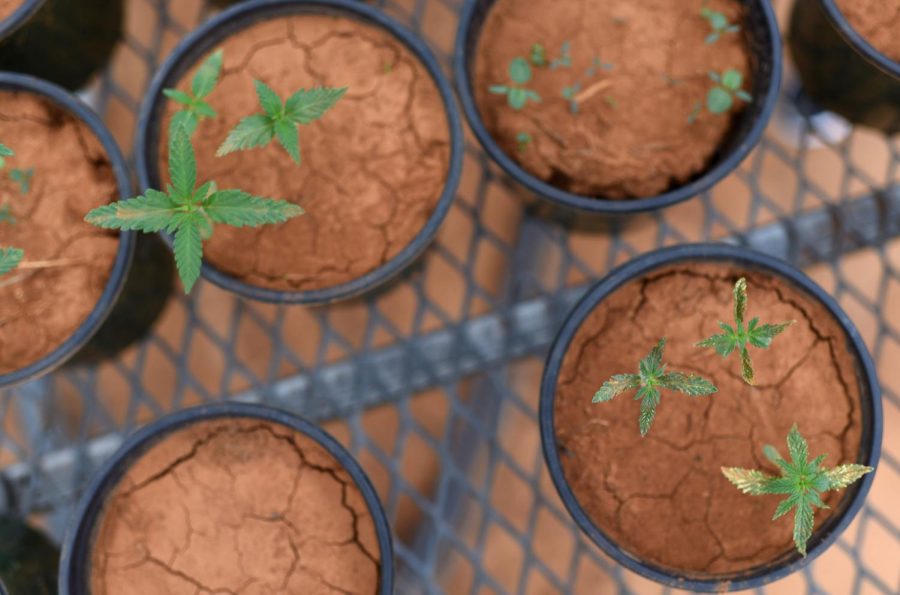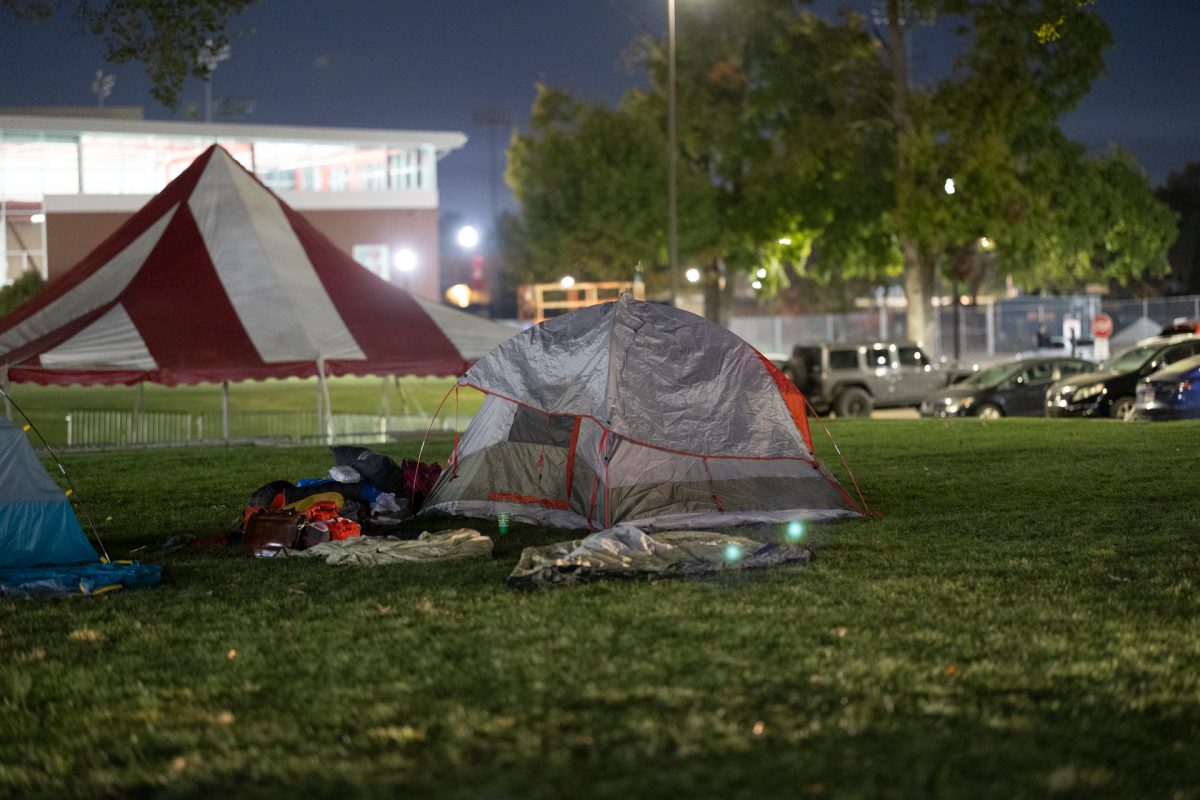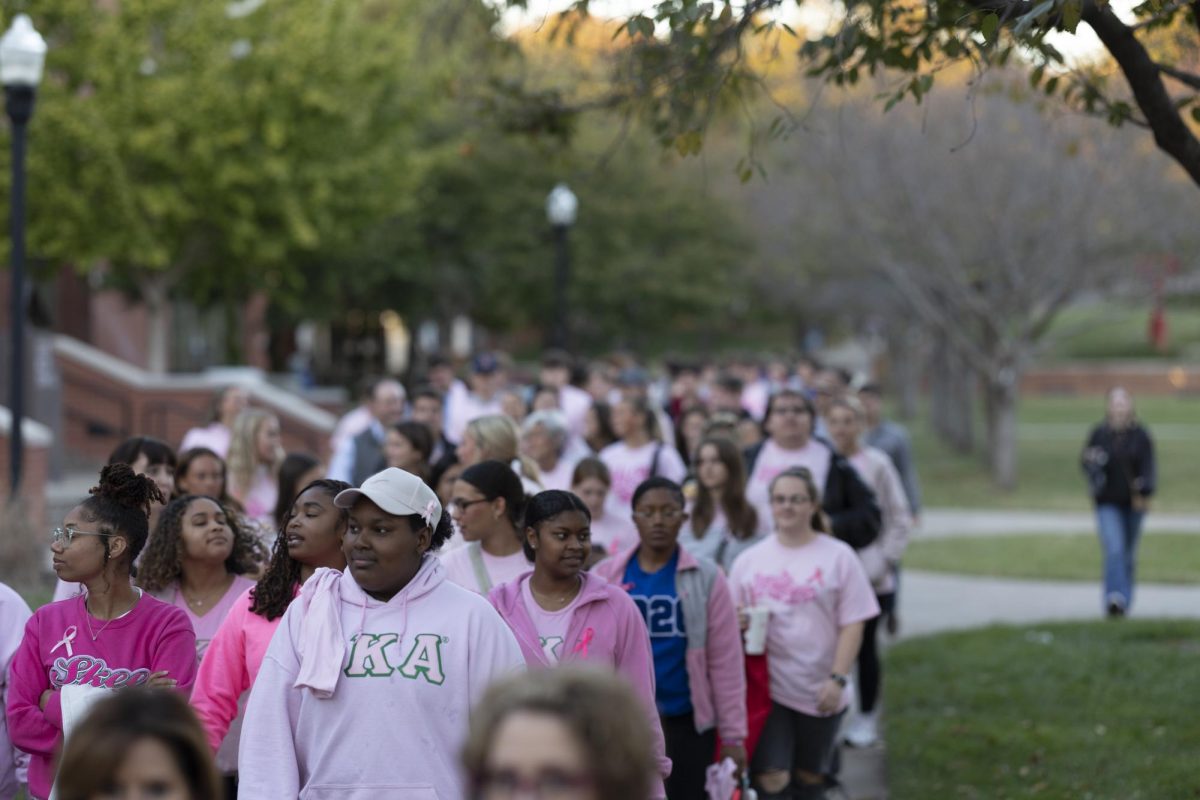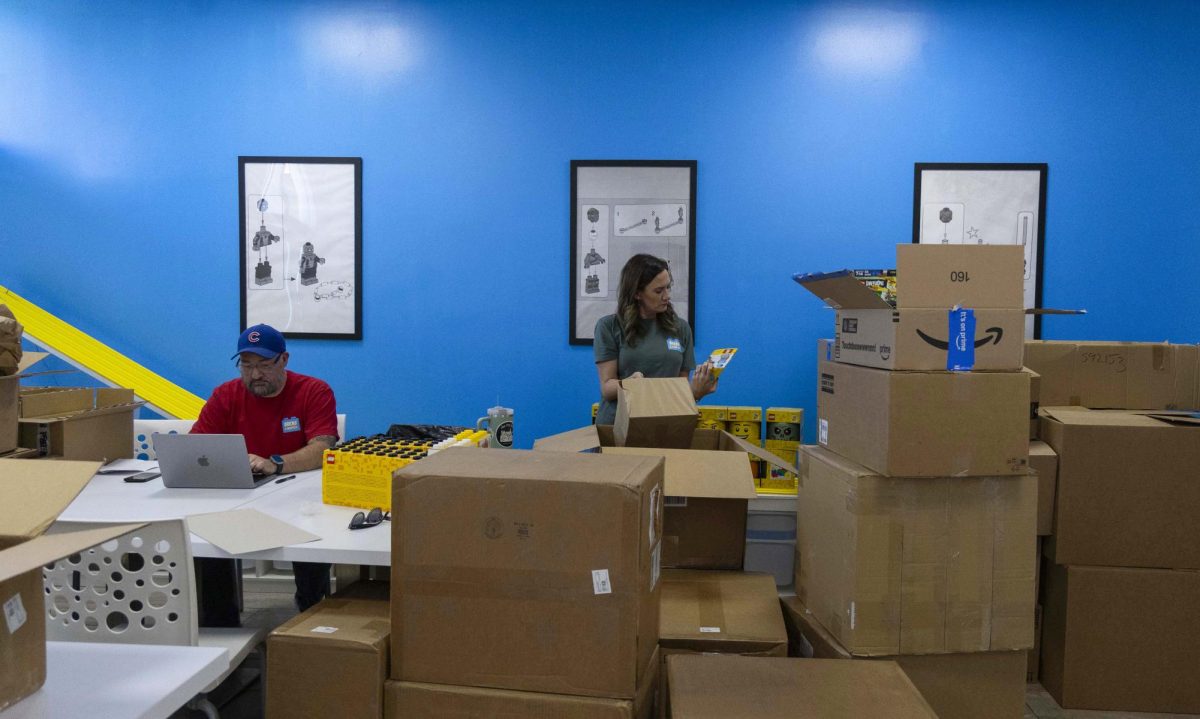My old Kentucky home: the ‘Silicon Valley’ of hemp
Past goats, grapevines, calves and corn sit small plots of tilled soil ready to be planted. In a few months, tucked at the back of this farm, rows of deep green plants — each with pointy, ribbed leaves — will reek of weed. Sun will soak tall stalks while researchers and students test the plants before tearing them down. They won’t be tearing down marijuana, though. They will be finishing their third year of researching hemp at the University Farm.
The United States is the only industrialized nation that does not allow industrial hemp production, according to the Kentucky Department of Agriculture. Eleven states have legalized the research of hemp, including Kentucky. Right now, the farm is preparing to plant what will be its third year of a five-year pilot program to study hemp in Kentucky called the Industrial Hemp Pilot Program.
Kentucky used to be a leader in hemp farming until this activity was made illegal. According to the Kentucky Department of Agriculture, the state’s first hemp crop was grown in 1775, and it produced 40,000 tons of hemp by 1850.
The 1938 Controlled Substances Act outlawed hemp, along with marijuana, in the U.S. Moreover, the production of hemp isn’t controlled by the Department of Agriculture but by the U.S. Drug Enforcement Administration.
While the plant is of the same cannabis sativa species as marijuana, hemp plants have very little tetrahydrocannabinol, or THC, which is the chemical that produces a high. THC levels in marijuana average “about 10 percent” while hemp holds less than 1 percent THC, according to the Kentucky Department of Agriculture. There is not enough of the chemical for people to use hemp as a psychoactive drug.
At the farm, agronomy professor Todd Willian rubs a baby plant leaf between his fingers and to see if any cannabis smell will be produced. Willian specializes in the study of plants at WKU and helps supervise students and researchers who work with the crops. He admits the only way people can distinguish between hemp and marijuana is to test the plant for its THC content. In the U.S., less than 0.3 percent is considered hemp, and anything more than that is marijuana.
Willian said another common misconception is that hemp crops can be a place for people to hide marijuana. When marijuana and hemp are planted close together, the cross pollination ruins the THC content in marijuana, making it useless as a drug.
Research came at a convenient time just 10 years after the Senate approved the Food and Drug Administration to regulate tobacco at the protest of Kentucky and surrounding lawmakers. This regulation, passed in 2004, ended price supports still in place from the Depression and forced growers to sell tobacco at whatever cost they could get. The incentive for Kentucky lawmakers was a $12 billion buyout to aid farmers struggling from the decrease in economic demand for tobacco products. This downturn stemmed from increased taxes on tobacco that dissuaded the public from buying due to health concerns.
In 2013, farmers only had one year left before the subsidy ran out, and to many hemp seemed like the solution for revitalizing farming in Kentucky.
That year Sen. Rand Paul and Sen. Mitch McConnell, with the help of two senators from Oregon, introduced the Industrial Hemp Farming Act, which would remove hemp from the federal list of controlled substances.
In a 2013 Frankfort hearing, Paul told lawmakers that Kentucky hemp consumers “are exporting our profit to Canada,” according to Politico. “I see no reason we wouldn’t want to be a leader on this,” he said.
Canada is one of the U.S.’s major suppliers of hemp. In 2011, Canada’s hemp exports exceeded more than $10 million with the majority of product going to the U.S.
Opposition to this legislation came from inside the commonwealth. U.S. Rep. Hal Rogers of Kentucky and Kentucky State Police, two major opponents, argued that law enforcement would be unable to tell hemp and marijuana apart because the plants are so similar.
While the Industrial Hemp Farming Act is still in consideration in the Senate Judiciary Committee, McConnell pushed further in 2013 for a provision to be added to the Farm Bill that would allow for research on hemp production. That provision passed in 2014, and that year WKU started research with other Kentucky universities.
It hasn’t been easy, though, for the state to regain growing hemp. When the pilot program began, the state bought 250 pounds of hemp seeds from Italy. The DEA seized the shipment of seeds, forcing the Kentucky Department of Agriculture to sue by citing the 2014 Farm Bill. The Department of Agriculture was compelled by the DEA to apply for a controlled substances permit, which was later granted, and the seeds were returned.
Today, small plots of dark brown dirt are waiting for warmer weather before the hemp can be planted. 2016 is the first year researchers have been able to plant this early in the season with sufficient rain for the crop to flourish. This year, WKU is one of eight Kentucky universities in the program.
A small greenhouse now holds about 30 potted hemp plants that in their youth look more like mint than cannabis. These plants are used to test the effects of herbicide on hemp, which has presented mixed results in the past. In a few months, their sister crop will be almost 15 feet tall and will look and smell identical to hemp’s marijuana counterpart. The crops will grow for a few months and then be harvested in the fall. The researchers will then test the crops for fiber content and other benchmarks before discarding the plants. This research is shared with other universities and made public for farmers and growers to learn how best to grow hemp in a climate like Kentucky’s.
Willian said while they can successfully gather data in the five-year time span allotted, 10 years would be a better period of data for growers to reference, and hemp’s legalization would be the biggest advantage since most crop research is federally funded.
“One of the big questions we have is ‘What variety can you grow?’” he said. “With any crop, you have varieties that do better with certain needs and certain climates, and we are just now getting research on that.”
While the farm has done plenty of research with the stalks and seeds of its hemp plants, Willian said it has yet to really research the chemical cannabidiol, or CBD, which he believes might be a way for Kentucky to turn hemp into a major crop.
CBD, unlike THC, is not psychoactive and is being tested more and more as a potential new medicine. In a 2013, the British Journal of Clinical Pharmacology published a review stating that studies showed CBD could be used to treat depression, anxiety, epilepsy and psychosis disorders and could prevent tumors and cancerous cells.
Farmers like Josh Hendrix are looking to prove that there is a market for hemp in Kentucky, which hasn’t legally grown the plant in more than 70 years. While universities like WKU have the ability only to research the plant, farmers like Hendrix have the ability to market and sell their crops.
Everyone thinks it’s cool that Kentucky is leading the way in something. We can kind of be the Silicon Valley for this.
“The most common misconception is that this industry exists,” Hendrix said. “We are creating the domestic industry. There are companies out there that make hemp products; they just don’t use domestic hemp yet.”
Hendrix is the president of Hendrix Hemp, a farm licensed by the Department of Agriculture to research growing and marketing hemp. Hemp lured Hendrix back into Kentucky in 2014 when the Farm Bill passed. He had heard of hemp in college and was intrigued to take over his grandfather’s farm.
Hendrix said Kentucky hemp production is in the early stages of what may be a multidecade project in the way that it took farmers years to perfect tobacco growing. An even bigger struggle is that the variety of hemp grown here in the early 1890s, when farmers were familiar with the crop, no longer exists.
“No one is saying this is 100 percent going to work, but there is potential,” Hendrix said. “We don’t know if we are going to make money at this.”
Hendrix said hemp has caused younger generations to become interested in farming again — notable, considering that the average age of a farmer in America is 59.
Marijuana is currently Kentucky’s No. 1 cash crop and outsells traditional tobacco, which comes in second, according to the Appalachia High-Intensity Drug Trafficking Areas.
Research, Hendrix said, is critical for farmers to make hemp a staple of the Kentucky economy.
“WKU is so important because their research is public information for farmers in the future and now,” he said.
Hemp re-emerging in Kentucky has had surprising effects on changing the stigmas hemp traditionally holds.
“Students are very interested in hemp. Everyone is interested in hemp,” Hendrix said. “When we have tours on the farm … it’s the only crop where people will get off the wagon and go into the field and take a selfie.”
More important, Hendrix said, is that hemp has put Kentucky on the map politically and socially.
“In Kentucky, hemp is cool,” Hendrix said. “Everyone thinks it’s cool that Kentucky is leading the way in something. We can kind of be the Silicon Valley for this.”









